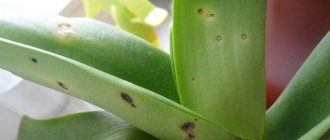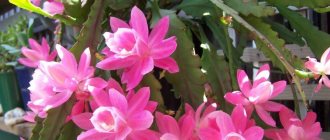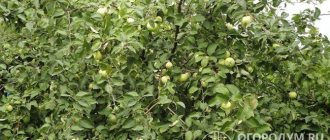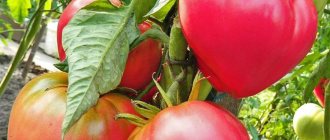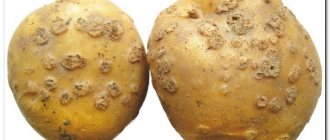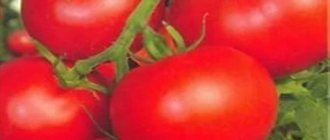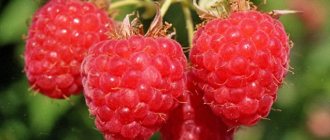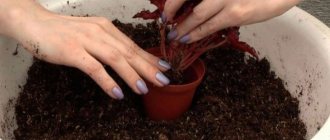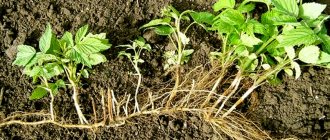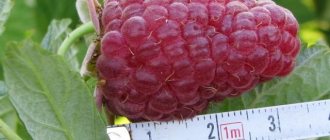Raspberries are one of the most common crops in gardens and vegetable gardens. This plant is relatively unpretentious, produces a tasty and healthy harvest and grows well. However, raspberries, like many other crops, can suffer from a number of diseases. These diseases are usually viral in nature and are transmitted by insects or contaminated sap. Problems caused by parasitic pests are also dangerous. Not all infections can be cured, but it is quite possible to prevent them using preventive measures.
Fungal diseases of raspberries
Bushes can be affected by various types of fungi. The infection spreads to healthy plants as follows:
- through plant debris and contaminated soil;
- from diseased plants.
Fungal diseases can progress if it rains for a long time, the weather is excessively humid and damp, and there is heavy dew.
Gray rot
With this disease, the fruits become covered with small gray spots, which begin to increase, affecting all the berries. They rot and become covered with a coating of fungal spores. In humid weather, spores spread much faster, which can cause the entire raspberry tree to be affected. Gray rot can infect both berries and shoots. Sick bushes most often do not survive the cold and die.
Gray rot affects all raspberries.
Raspberry verticillium
This disease is caused by a fungus that overwinters in the soil. It penetrates into plants through the roots and begins to spread throughout the entire bush through the vascular system. With this disease, the leaf blades turn yellow and dry out. The upper leaves remain in place, while the lower ones fall off. The shoots turn purple or dark blue and stop growing. Their tops wither and die.
A bush affected by fungal spores.
If the damaged shoots persist until next year, they will produce a harvest of dry and small berries. The roots of such plants are viable for a long time, but there are fewer and fewer new shoots.
With verticillium, raspberry bushes die within 1-2 seasons.
Rust on leaves
Affects bushes in wet weather. In this case, the inner side of the leaf plate is covered with small round convex spots of yellow-orange color. The disease is caused by fungal spores, which can form several times during the summer. The leaves dry out, as a result of which the raspberries cannot survive the winter and die.
Raspberry leaf affected by rust.
Raspberry anthracnose
The causative agent of the disease can infect all above-ground parts of the bush. The leaves begin to suffer first, along the veins of which round spots appear with a purple edge and a gray center. They merge, leading to curling and drying out of the leaf plates.
Effect of anthracnose on raspberry leaves and stems.
Raspberry shoots are covered with gray sores. The bark of plants turns gray and cracks appear on it. Anthracnose spots begin to ring the fruit clusters, causing them to dry out. The berries of the affected bushes turn brown and become deformed. Numerous fungal spores appear on ulcers and spots. The causative agent of the disease tolerates cold well. Anthracnose can be cured if it only slightly affects raspberries.
Powdery mildew
Raspberry berries, shoots and leaves become covered with a gray or white coating resembling dust. If the plant is just sick, the dew can be easily removed with your fingers. If left untreated, the bush may be completely affected. When fungal spores come into contact with a bush, they contribute to the development of mycelium, which pierces the surface of the fruit, stem and leaves with its shoots.
Manifestation of a raspberry disease called “powdery mildew”.
The roots of the fungus are capable of sucking all the nutrients from the plant, which leads to withering and death of the raspberry tree. The affected bush quickly loses vital functions. A dense layer of plaque prevents the evaporation of excess moisture and breathing. The process of photosynthesis is inhibited. The disease leads to the death of plant tissue.
Purple spot
The pathogen penetrates the raspberry through damage to the bark. The period when the first signs of purple spot appear is early summer. Small spots of light purple color appear on young shoots. They begin to spread upward and unite into sections about 30 cm long.
The spots become reddish-brown in color. Necrotic spots appear on infected fruit branches, cuttings and raspberry leaves. The berries, before they have time to ripen, dry out and the buds die.
A bush affected by purple spot.
Leaf cankers
This disease most often appears in mid-summer, affecting raspberry leaves, causing them to begin to fall prematurely. Wet weather favors the development of the disease. Large spots appear on the leaf blades and quickly increase in size. They have no border and do not fade. Under favorable conditions, the epidermis of the leaf breaks, and spores appear from under the breaks.
Loss of leaf blade viability leads to a decrease in next year's yield.
Raspberry streptoria
Shoots and leaves are affected. Small round spots of light brown color with a dark rim appear on the leaf blades, which can be seen in the photograph. After some time, the center of the spots becomes lighter. On young shoots, the disease manifests itself as light spots that cover their base. Gradually, the damaged tissue begins to tear and the plant dries out.
Streptoria on raspberry leaves.
Botanical description
The sinuous woody rhizome of raspberries forms many adventitious roots, due to which the raspberry root system becomes powerful and very branched. Erect stems reach a height of one and a half to two and a half meters. The shoots of the first year are herbaceous, juicy, bluish-green, covered with frequent, thin, small thorns. In the second year, the shoots become woody and brown, and after fruiting they dry out, but new green stems grow instead the following spring.
Raspberry leaves are petiolate, alternate, compound - with three to seven oval leaflets, the upper side of the leaf blade is dark green, and the lower side is whitish due to the fine hair growing on it. Small racemose inflorescences of white flowers about one centimeter in diameter are located in the axils of the leaves or on the tops of the stems.
The raspberry consists of small, hairy drupes that grow together to form a complex fruit. The most common varieties grown are red raspberries of various shades, but yellow raspberries and even black raspberries are also cultivated. After planting, raspberries usually begin to bear fruit the next year; in the first year, flower buds are just laid on its stems, from which then, from the next spring, fruit branches develop. However, today, thanks to the efforts of breeders, there are remontant raspberry varieties that bear fruit on the shoots of the first year.
- Blackberries: growing in the garden, propagation, varieties
Raspberries attract many insect pests that parasitize on them, and they also have many dangerous diseases. Proper planting and care of raspberries strengthens the plant's resistance to diseases and insect parasites. We will tell you not only about how to deal with raspberry enemies, but also about preventive measures that will protect your raspberry tree from the penetration of harmful insects and pathogens.
Viral diseases
Raspberries are often susceptible to viruses. Plants are infected with viral diseases by nematodes, mites, and aphids. Healthy bushes can be affected by diseased bushes when ingested by sap. In addition, the virus can be transmitted through tools used when pruning raspberry trees and cultivating the soil. There are more than 30 viral diseases of remontant and ordinary raspberries. At the same time, productivity is greatly reduced. Such diseases are considered incurable.
Witch's broom
This is a disease caused by the bites of the leafhopper Nacropsis fuscula (Zett.). Parasites suck the juice from raspberry shoots. The insects are so small that they cannot be detected immediately. As a result, the virus begins to spread throughout the plant, and after a while it dies.
Externally, the disease is manifested by the development of about a hundred low-growing and thin shoots on one bush.
The leaves of affected raspberries have a chlorotic tint. Flowers become deformed and often do not form ovaries. If nothing is done, the leaf blades become small and the stems become short. This greatly reduces the yield, or it is absent.
Leaf deformation
A viral disease often leads to diseases of raspberry leaves. In this case, pathological growth of their tissues occurs, the shape of the leaf plate changes, and its color changes. The leaf thickens, its tissues grow unevenly, which is why it begins to curl, becomes convex-concave or wavy, and becomes covered with swellings in the form of bubbles. Lesions are often accompanied by necrosis, when tissue dies. Deformed leaves begin to dry out and fall off early.
Raspberry mosaic
Plants are infected with the virus by aphids and other sucking insects. With this disease, the leaves acquire a mosaic color, consisting of blurry yellow and green spots, randomly located. The surface of the shoots and above-ground parts becomes uneven and rough. Chlorotic spots appear along the lateral veins of the leaves, but they are often absent.
This disease weakens the growth of young and adult bushes. The shoots become thin, lag behind in development, and in the spring their number is greatly reduced.
The new shoots are few in number, develop poorly and weakly, and have small leaves.
Infectious chlorosis
At the beginning of development it is asymptomatic. After some time, the following signs appear:
- leaves decrease in size;
- inconspicuous fruits appear;
- leaf plates take on a different color;
- Poor shoot growth is observed.
Chlorosis on raspberries.
The leaf begins to turn yellow along the central vein, and after a while the yellowness covers its entire area. The shoots stretch out, and the fruits, if they appear, often have a one-sided shape and have an unpleasant taste. Leaf blades often curl and wrinkle.
Ring leaf spot
The ringspot virus is transmitted by nematodes and planting material. With this disease, the shoots are greatly shortened, the leaves become stiff, become wrinkled, and their edges bend downwards.
In autumn, the dark green leaf blades turn bronze, glassiness and necrosis of the veins occurs. There is a strong modification of the flowers, their deformation occurs, due to which the fruits are not formed.
Ring spot on raspberry leaves.
The upper part of the young shoots dries out. Affected bushes begin to grow poorly, yields decrease several times. The berries become smaller, dry out, and acquire a sour taste. Chlorotic spots in the form of rings with clear edges sometimes form on the leaves. The virus can lead to the formation of enations - leaf-like outgrowths - on young leaves.
What does a diseased bush look like?
A gardener who has been dealing with raspberries for many years notices at first glance the appearance of problems with the health of the bushes. Beginning gardeners have yet to acquire this skill. The first step is to pay attention to the raspberry plant.
Signs that the culture is sick may be as follows:
- general change in appearance (short stature, formation of a small number of leaves, weak flowering);
- the appearance of spots or dots on leaves and stems;
- poor fruiting or complete absence of berries on the bushes.
Important! To start fighting the disease, you need to notice that the culture looks sick. Follow-up – Determine the symptoms of a specific problem.
Wilting symptoms
Various diseases of raspberries and their damage by insect pests manifest themselves with specific symptoms. You need to pay attention to the following warning signs:
- cessation of development of the upper parts of young shoots with subsequent wilting;
- slower growth of stem tips, blackening and dying of leaves;
- dying off of branches along with flowers and fruits;
- the formation of vague spots spreading along the stems and shoots;
- blackening and death of petioles and leaves;
- drying of fruits;
- yellowing and wilting of leaves, shoots, stems.
If any of these problems are detected, you should immediately find out what disease or insects caused it. Only after identifying the source can you begin to fight it.
Bacterial diseases
The most common diseases caused by bacteria include stem and root bacterial canker.
Cancer of the root system and stems
According to the description, bacterial root cancer is a tumor with a bumpy surface. Growths appear on the base of the stem and roots of the bush. At the beginning of development, the tumor is soft, after some time it hardens, and at the end it rots. With this disease, the roots do not receive the necessary nutrients, and the raspberries dry out.
Root cancer is incurable. If a disease is detected, it is recommended to destroy the bush.
With stem canker, the neoplasm occurs on the lower part of the stem. Due to the tumor, the plant does not receive enough nutrients, it begins to dry out, the leaves turn yellow and fall off. The cancer bacterium can remain in the stems of the bush for a long time. The affected raspberries are dug up and burned.
Poor care
Many factors - such as lack of nutrients, lack of water or raspberry diseases - lead to damage to the leaves. Once you determine the cause of the problem, you can return your raspberries to peak yield with a few simple fixes. Although this is not always possible.
But in any case, you need to know how to provide proper care for raspberry leaves, whether they are healthy or sick.
If you don't provide your raspberries with enough water, they will soon show signs of drought stress. It manifests itself with the following symptoms:
- Shriveled leaves;
- Shriveled fruits;
- Dry, stringy shoots and roots.
All of these signs are clear evidence that the plants are not getting enough water. After bushes with these symptoms are given the proper amount of water, damaged leaves are removed, and the plants should recover.
More on the topic: Bacterial diseases of raspberries
At the same time, avoid overhead watering, because water remaining on the leaves can cause disease, primarily sunburn.
Various diseases cause leaf damage. Infected plants should be removed and destroyed immediately upon discovery to prevent the spread of the contagious disease.
Treatment of diseases
If diseased raspberry bushes are discovered, it is recommended to begin treating them as soon as possible. There are many effective ways to combat diseases.
Medicines for fungi
Almost all fungal diseases can be easily cured. The following drugs are often used:
- Bordeaux mixture;
- fungicides.
Most often, the affected bushes are treated with Bordeaux mixture. It is presented in the form of a mixture of slaked lime and copper sulfate. The drug acts directly on fungal spores and prevents burns on plants.
Fungicides help fight fungal diseases of raspberries:
- Benlat, Euparen. Spray the bushes every 4-6 days until the gray rot disappears.
- Cuprosan. Eliminates spotting.
- Nitrafen, Topaz, Vectra, SKOR. Helps fight gray rot and powdery mildew.
- Copper and iron sulfate. Available in the form of crystalline salt or powder, which is diluted immediately before spraying the raspberry tree. Used to treat all types of fungal diseases.
- Fundazol. Used for treatment and prevention.
Chemicals are used 3 times per season: in the spring, when the first leaves hatch, then after the bushes flower, and as soon as the harvest is harvested.
Fundazol is often used to prevent raspberry diseases.
Iron and copper sulfate helps get rid of fungus.
Nitrafen is used to get rid of gray rot on raspberries.
Cuprozan helps with spotting of raspberry leaves.
Remedies against raspberry viruses
If raspberries are affected by viral diseases, the fight against them comes down to digging up the bushes and burning them. The drugs are powerless against viruses. It is not recommended to plant raspberries for 4-5 years in areas where diseased plants have been identified.
Antibacterial treatment
If raspberries are affected by bacterial cancer, treatment methods involve adding a mixture of potassium salt with ammonium sulfate or superphosphate to the soil. Thanks to this, soil microorganisms begin to intensively destroy the causative agents of this disease. With the help of organic fertilizers, the development of pathogenic bacteria is suppressed.
Raspberry pests and their control
Aphids on raspberries
Raspberry leaf aphids and raspberry shoot aphids are widespread pests of raspberries, blackberries and other garden berry crops. Shoot aphids settle in colonies at the ends of shoots and in raspberry inflorescences, and leaf aphids live in small groups on the underside of leaves and feed on their juice. Shoot aphids slow down the growth of raspberries, and leaf aphids are also carriers of viral diseases. The method of combating aphids is to spray the plants with karbofos or actellik during the period of raspberry bud opening.
Spider mite
This insect affects not only raspberries; gooseberries, black and red currants, strawberries, blueberries, elderberries, roses and grapes also suffer from it. The mite, located on the underside of the leaves and feeding on their juice, entwines the leaves with a thin web. Damaged areas become discolored; as the disease progresses, the leaves become marbled, gradually dry out and eventually fall off. A harbinger of the appearance of mites on raspberries is persistent and prolonged heat without precipitation.
An effective measure in the fight against ticks is spraying raspberry bushes (gooseberries, currants, etc.) with acaricides, which include drugs such as karbofos, phosphamide, colloidal sulfur, cidial, metaphos. If the dominance of mites is too strong, plants can be treated with acaricides repeatedly - up to four times a season with an interval of ten days. In order not to create a comfortable environment for ticks, in addition to watering in dry heat, they practice spraying the bushes with water in the evening.
Gall midges on raspberries
Raspberries and gall midges are harmed by two types - the raspberry mosquito, or shoot gall midge, and the raspberry stem gall midge, which lay eggs in cracks and damage to the bark on the lower part of the shoots, forming galls - swellings. The bark of the affected shoots dies and peels off, and they dry out. Shoots with characteristic signs of damage (swellings in the root areas of the stems) must be cut out and destroyed along with the pests; the soil in which gall midges overwinter must be dug up to a depth of 15 cm in spring and autumn, and the plants must be treated with karbofos or actellik.
The raspberry gallworm behaves in a similar way, laying larvae in raspberry shoots, on which galls are formed. If this pest is detected, raspberries should be sprayed with the same karbofos or actellik, as well as ambushes, before flowering begins.
Raspberry beetle
This is a small insect up to 4 mm in length, covered with yellow or gray hairs. It overwinters in the top layer of soil, and by the end of May it moves into raspberry buds and eats them away, also damaging open flowers and leaves. At the end of July, the larvae return to the soil again and pupate there to turn into beetles in the fall.
- Cossack juniper: planting and care, description of varieties
You need to get rid of raspberry beetles during the budding period, shaking them off the bush and destroying them. It is necessary to dig up the soil under the bushes and between the rows during the period of pupation of the larvae. Good results in destroying this pest are obtained by spraying raspberries with confidor, decis or a ten percent solution of karbofos.
Strawberry-raspberry weevil
This bug harms not only raspberries, but also strawberries, so the appearance of a weevil in a summer cottage is extremely undesirable. The beetles overwinter under fallen leaves and clods of earth, and in the spring they lay eggs in buds, where the larva feeds on the flower, eating it from the inside. One female weevil, laying one egg per bud, can damage up to 50 flowers in this way. In June-July, a new generation of weevil appears, eating leaves.
To prevent beetles from destroying the crop, spray the raspberry tree during budding and no later than five days before the flowers open with karbofos, actellik, metafos or other preparations of similar action.
Raspberry bud moth
This is a butterfly with dark brown wings with small golden spots, a moth caterpillar is red with a dark brown head. Most of all, this insect harms early raspberry varieties. The caterpillars overwinter in cracks in stems or under plant debris on the ground, and in early spring they move onto shoots and gnaw out buds, and then penetrate into the pulp of the shoot, pupate there at the end of May, and from the beginning of raspberry flowering, butterflies fly out of the pupae, laying eggs in raspberry flowers . The caterpillars that emerge from them eat the berries, destroying the raspberry crop.
In order not to help the bud moth multiply, when pruning old shoots, do not leave stumps from them. Spray the raspberries with confidor, spark, decis or three percent karbofos emulsion in early spring, when the buds are just beginning to swell.
Raspberry stem fly
It is also a dangerous pest, the larvae of which gnaw out spiral-shaped passages inside the stems from top to the roots, causing the tops of the shoots to wither, then turn black and rot. When flowering begins, the larvae go into the soil, where they overwinter and turn into butterflies, which fly out in the spring and lay larvae that eat the stem from the inside. Carefully inspect the bushes and immediately cut off the affected shoot tips to a healthy stem. Spray raspberries with actellik or karbofos in early spring, when they are just beginning to grow shoots. In autumn, remove fallen leaves from the area.
The raspberry glass beetle behaves in approximately the same way, but it prefers to overwinter in the core of the raspberry stem or root, forming swellings on them. That is why it is very difficult to destroy it with an insecticide. Cut out old shoots that will no longer bear fruit, without leaving a stump; make sure that there are no cracks or mechanical damage on the stems.
Non-chemical drugs and traditional methods
Raspberries can be treated not only with chemicals, but also with environmentally friendly preparations. They contain antagonistic fungi, viruses and bacteria that do not harm the bushes, but help get rid of diseases. Biological medicines improve the health of raspberries and are an excellent supplement.
Bisolbifit stimulates the immunity of raspberries.
These include:
- Bisolbifit. Helps stimulate immunity in plants and protects raspberries from various diseases. In spring it is used for preventive treatment.
- Bitoxibacillin. The drug helps fight larvae and eggs on young shoots. Causes massive death of parasites.
- Fitoverm. A product that has a complex effect. It contains waste products of soil microorganisms. The action begins 4 hours after hitting the ground.
Biological preparations can dissolve in groundwater, so they must be introduced into the soil in dry form.
Often sick raspberry bushes are treated with folk remedies. The most effective methods include:
- Infusion of marigolds. 500 g of dry leaves are poured into 10 liters of boiling water and left for 2 days. Helps fight aphids and fungal diseases.
- Watering the raspberry tree with hot water. Carry out in early spring, when the snow melts. Water is boiled, poured into a watering can and the plants are treated. This allows you to get rid of certain types of fungi and parasites.
- Horsetail decoction. 400 g of fresh herbs are soaked in 3 liters of cold water for a day. Bring to a boil and keep on low heat for 30 minutes. Cool, filter and dilute with water in a ratio of 1:5. Spray the bushes once every 7 days. Used against powdery mildew.
- Ammonia. 4 tbsp. l. The products are diluted in 10 liters of water and raspberries are treated against diseases in the spring. 1 bucket is enough to water 2 bushes. Helps against bacterial and fungal diseases.
Raspberries can be covered on both sides with urea. This allows you to feed the plants, strengthen their immunity and protect them from insect pests.
Infusion of marigolds to combat aphids on raspberries.
Viral diseases with photos
The most dangerous viral diseases affecting raspberries are:
- mosaic;
- leaf curl;
- witch's broom;
- infectious form of chlorosis.
All of these problems have the same nature: they are caused by special microorganisms that are unable to exist and reproduce without a host organism. Viruses bind to plant cells and use them in their life activities.
That is why such diseases are transmitted in the following ways:
- when transplanting shoots of an infected crop;
- through the sap of a diseased plant that gets on garden tools;
- through insects (aphids and mites) that feed on the juice of diseased raspberries and then transfer the infection to healthy bushes.
Attention! Once launched, the virus can spread over large areas, so it is extremely important to deal with it in a timely manner. To do this, you need to eliminate carriers, destroy dead bushes, and choose only healthy planting material for replanting. It is also important to ensure that the raspberries are properly hydrated, fed and pruned.
Preventive measures
In the fight against raspberry diseases, much attention is paid to preventing their development. Only healthy seedlings that show resistance to various infections should be grown on the site. In addition, preventive measures include:
- thinning bushes;
- timely disposal of disease-affected stems;
- regular feeding and watering of raspberries;
- mulching bushes with manure in early spring;
- autumn digging of raspberries;
- burning fallen leaves.
Raspberry feeding is carried out in the fall.
Why do raspberry diseases occur?
Culture diseases can develop for the following reasons:
- if infected planting material was initially selected for planting;
- if the bushes have not been thinned in a timely manner (in too dense raspberry fields, the plants suffer from a lack of sunlight and ventilation);
- if preventive work was not carried out to eliminate pathogens.
Peculiarity! The most important cause of raspberry diseases is the wrong choice of varieties for cultivation in specific weather conditions, or the use of crops that are not resistant to viruses and parasites.
Fighting raspberries
How to deal with raspberries? All raspberry varieties produce basal shoots - some less, others more. This shoot spreads throughout the raspberry forest, and if you don’t care, it will even end up where it shouldn’t be. The easiest way is to trim unnecessary shoots with a sharp shovel to a depth of ten centimeters, but leave them in the same place where they will gradually dry out. In order to protect the garden from raspberry shoots entering it, the raspberry patch is fenced with pieces of slate dug into the ground to a depth of 35-40 cm.
You can also plant garlic or sorrel, or even better, beans, around the raspberry bushes, and this measure can stop the growth of the shoots. If you grow raspberries on your plot not in a strip, but in a bush way, then you can plant them in barrels or buckets dug into the ground without a bottom, and then the root system will not grow in breadth and, therefore, will not be able to produce shoots. It has been noticed that applying nitrogen fertilizers not in spring, but in autumn, significantly reduces the number of root shoots.
Diseases and their treatment
If raspberries grow on your site, its diseases and the fight against them should be the subject of close study, along with the rules of care.
Chlorosis
First, yellowing of the leaves between the veins is observed. The yellow area gradually increases and covers the entire leaf. New shoots grow disproportionately thin and long. The raspberries become smaller, deformed and dry out.
Infection can enter through breaks or cuts. It is often introduced by insect pests. In bushes growing in acidic, waterlogged soil, immunity to chlorosis is reduced.
This is an incurable raspberry disease and the only way to combat it is to destroy the infected bushes.
Curly
In a diseased plant, the leaves and shoots curl and become deformed. The fruits turn gray and dry out, becoming flattened. If you do not get rid of diseased plants in time, the entire planting may die. Most often, this disease is carried by aphids and ticks.
It is also an incurable disease that requires the complete destruction of infected plants.
Mycoplasma disease
This disease is popularly called "witch's broom", overgrowth or dwarfism. The infected plant throws out many small, barren shoots 30–50 cm high. The leaves become smaller. A “dwarf” bush reduces productivity and after a while completely stops bearing fruit. The infection enters through wounds and is spread by insects and rodents.
The disease is incurable and highly viral. The infected plant must be destroyed.
Rust
Fungal disease. Most often develops at high humidity.
A gray spot with a red border appears on the upper part of the affected leaf, with a dark coating underneath. After some time, the diseased leaves fall off. Brown spots appear on the stems. Productivity decreases, the plant becomes less winter-hardy.
Infected shoots must be destroyed, and the plant must be sprayed with Bordeaux mixture 1%, Polyram or Cumulus DF. Spring mulching with manure is useful: the substances it contains suppress fungus.
Purple spot
Another name for the disease is didimella. It develops more often in damp weather.
After infection, purple spots appear on the stems. They enlarge, have a dark red border around the edges, and black dots in the center. After some time, the spots merge. The bark on the sprout cracks and it becomes brittle. Kidney development stops.
Infected shoots are cut off and the plant is treated with 1% Bordeaux mixture.
Powdery mildew
Fungal infection. Most often, infection occurs in early summer, especially with high air humidity.
A white coating appears on infected leaves, they dry out and curl. Infected fruits become deformed and the stems become brittle.
Infected areas are removed, and the plant is treated with preparations containing copper.
Anthracnose
Another fungal disease of raspberries. Its symptoms are the appearance on the shoots of light gray spots with a red border. The fungus infects all parts of the plant: leaves, berries, shoots. The bark becomes covered with black spots, the leaves dry out and fall off. The berries become ulcerated and dry out. The bush stops developing and loses winter hardiness. Without treatment, the plant dies.
At the first sign of disease, infected parts should be cut off and burned. Treatment consists of treating the plant with Bordeaux mixture. Do this several times with an interval of 10 days. If this does not help, you will have to get rid of the bush.
Use in folk medicine
Raspberries have long been considered a medicinal product. Dried fruits or delicious jam with hot tea were always given for colds accompanied by fever. In fact, raspberry fruits are rich in organic acids, which have a diuretic effect, stimulate digestion, have an antipyretic effect, and in addition, have an anti-inflammatory and antiseptic effect.
Traditional medicine even uses the leaves and flowers of this plant for coughs, colitis and skin diseases. But for all its beneficial properties, raspberries themselves are completely defenseless against various diseases. So what should gardeners do if they have raspberries growing on their plots? Disease and pest control becomes the main task for obtaining an annual harvest. Diseases can not only harm the yield, but also lead to the death of the plant. Therefore, every gardener should take note of methods of combating diseases and harmful insects.
White spot (septoria)
White spots on raspberries appear as a result of the activity of the fungus Septoria rubi Sacc. At the beginning of the development of the disease, small brown spots appear on the foliage. Over time, the center of the spots becomes white or light mustard in color, and the edges become brown. Gradually, the damaged areas of the leaf plate begin to collapse, and its tissues dry out.
Related article:
Getting rid of the Colorado potato beetle without chemicals
The fungus also attacks the stems of shrubs. The spots appear near the buds and are not as dense as on the foliage. The affected bark of the shoots begins to crack, the buds die off, and as a result the bush weakens and ceases to be productive. Raspberries affected by white spot rarely survive the winter.
Treatment
If white spotting is detected, the infected parts of the bush are cut off and burned. To prevent the development of the disease, raspberries must be treated with fungicides approximately 3-5 times per season. To do this, use 0.5% Bordeaux mixture or other chemicals (for example, Topaz, Profit, Profilaktin, etc.). The use of such substances is stopped 25-30 days before harvest.
No less effective, but safer for human health, are fungicides based on bacterial cultures. They contain certain types of bacteria that prevent pathogens from entering plant structures. Such biological products as “Fitocid”, “Gaupsin” and “Fitosporin-M” have proven themselves well.
Related article:
I fight a bear like this...
Rust
Rust is a fungal disease. It is distributed everywhere and is most active in conditions of high humidity. Rust can be diagnosed by the presence of yellowish-brown bumps on the front side of raspberry and blackberry leaves in spring and early summer.
On the shoots, the disease manifests itself in the form of grayish sores with a reddish outline. By autumn, a dark coating appears on the back of the leaves - these are fungal spores preparing for the winter. Rust leads to reduced yields and plant death.
Control measures
- Affected shoots and leaves must be removed and burned. And the soil should be loosened regularly.
- Plantings should not be allowed to become dense and bushes should not be overgrown with weeds.
- In spring, it is recommended to mulch the soil under the bushes with manure or compost.
- Affected bushes should be treated with Bordeaux mixture or the antifungal drug Propi Plus.
Anthracnose
If brown spots are clearly visible on the raspberry trunk, this may indicate that the plant has anthracnose. The causative agent of this disease is spores of the Elsinoe Veneta fungus. Pathogens become active in spring or early summer during rainy periods. The spores are carried by splashes of water, quickly spreading throughout the entire bush.
The first to suffer from anthracnose are leaf blades and young shoots. You can notice distinct dark brown or brown spots on them. Over time, the spots increase in size, merge, and change color to ash-gray with a purple edge. As a result, the shoots are stunted and the leaves fall off.
Treatment
All affected areas are pruned and destroyed, and the bushes and soil are treated with fungicides (for example, “Agrolekar” or “Chistoflor”). To prevent the appearance of anthracnose in the future, preventive spraying with Bordeaux mixture is performed after the start of sap flow and before flowering. It is also important to regularly weed and trim the raspberries so as not to thicken the plantations.
Related article:
Why trees “burn”: bacterial burn of fruit trees discovered in 10 regions of Russia
Raspberry root canker
If the raspberry bush begins to turn yellow, and it’s spring or summer outside, then this is a sign of a serious illness. Most likely, the plant was affected by root canker or developed goiter in the roots. These diseases have similar symptoms: shoot growth stops, tuberous growths appear on the roots, fruits become unsweetened, and leaves turn yellow and curl. Most often, these problems appear in areas where the soil is slightly alkaline or neutral. The raspberries you are planning to plant in your garden should be carefully inspected. Seedlings that have swellings on the roots must be trimmed, the affected part of the rhizome must be removed, and a solution of copper sulfate must be prepared for cutting. Processing the cut is mandatory, do not neglect it. For prevention, experienced gardeners change the place where they plant raspberries at least once every five years.
Sometimes the leaves turn yellow because the raspberries, which have not been pruned for several seasons, have become too thick. Since thorny thickets are less well ventilated, the bushes lack light, and yellowing leaves are a sign that it’s time to prune. This procedure should not be neglected, as if done untimely it will lead to a decrease in raspberry yield.
Ring spot
The causative agent of ring spot is a virus of the same name. In professional literature it is called Raspberry ringspot virus or RpRSV. A cure for the disease has not been found, so all affected plants are uprooted and burned. The main symptom is the appearance of small spots in the form of rings (sometimes of irregular shape) on the upper part of the leaf blade. The spots are light green or pale green in color and are more visible in spring than in summer. Over time, the outer part of the rings becomes necrotic, but the inner part remains pale green.
Affected shrubs stop growing, their productivity decreases sharply or disappears altogether. Some shoots may die off in winter, and those that survive become brittle with deformed leaves.
Related article:
How and where to plant clematis correctly
The virus is spread by the sap of infected plants, grafting, and nematodes. Since the infection can also exist in other crops, the source of the disease can be cherries, strawberries, red currants, grapes, elderberries, as well as wild and weeds.
Important to know: Pruning raspberry bushes
Treatment
Elimination of the disease will involve removing the affected bush and taking preventive measures to prevent re-infection of the area. The most effective way is to use pesticides to combat the main carriers of the virus - nematodes. Insecticides are applied during digging at the stage of preparing the soil for planting a berry garden.
When choosing more environmentally friendly means, you should pay more attention to the quality of planting material and increasing the immunity of raspberries using moderate fertilizing with natural fertilizers. Also, in the area around crops susceptible to ring spot, marigolds, pyrethrum or castor beans are planted, which act as natural insecticides.
Non-chemical processing of raspberries
This is a one-time job, it can be considered a general treatment against pests, fungi and viruses. When sap flow has not yet begun, at the end of winter or early spring, raspberry bushes are watered with boiling water from a garden watering can. This method is also used for other bush plants - currants, gooseberries. Perhaps it could be used for large fruit trees, but it is impossible to do this manually.
This treatment destroys all pests overwintering in the buds and under the bush, disinfects viral colonies and destroys spores of pathogenic molds and fungi.
In Europe, instead of watering with boiling water, treatment with a solution of birch tar is widespread, since plants in warm climates are not cooled as much and can easily be damaged by too hot water. This procedure is carried out to protect plants from the raspberry-strawberry flower beetle until buds appear (2 tablespoons of tar per 10 liters of water).
Raspberries are treated with a solution of birch tar until buds appear.
Further treatment with any preparations is carried out before the first flower buds appear, but no later than 5–7 days before they open, that is, before flowering begins.
Processing remontant raspberries
From the beginning of budding until harvest, raspberries cannot be treated with chemical insecticides. This complicates the care of remontant raspberries, which bear fruit continuously. In addition, pests can begin to multiply rapidly during fruiting on ordinary raspberries, and it will be impossible to wait. In such cases, you can use not chemical insecticides, but biological control agents that are harmless to humans. For example, the drug Fitoverm described above. All recommendations for its use are in the instructions.
Curly
This viral disease most often manifests itself on the shoots of the second year: the leaves curl, turn bronze on the reverse side, and their veins become glassy. The flowers also become deformed: their calyx grows. The fruits do not set, the plants are stunted, the bushes are thinning.
Control measures
- The virus can be carried by aphids, so pests need to be dealt with in a timely manner: treat the bushes with a solution of Abiga-Pik, Skor, Funanon-Nova.
- If signs of disease are detected, the plant must be uprooted immediately before the virus spreads to healthy specimens.
- To prevent the disease, one of the treatment schemes is used:
| A drug | Dose | Frequency of treatments |
| Pentafage | 200 ml per 10 liters of water | 3-5 times with an interval of 7-10 days |
| Farmayod | 1,5% | 2-3 times with an interval of 14 days |
Mosaic
Raspberry leaf mosaic is a viral disease that manifests itself in the form of light brown or light brown spots of various shapes and sizes. As a result, the foliage becomes lumpy, coarser, deformed and smaller. The berries on the affected bushes are small and sour.
The causative agent of mosaic is the Arabis mosaic virus, which belongs to the same group as the ring spot virus. The pathogen is transmitted by aphids and soil nematodes. The disease is also transmitted through vaccination and other contact and mechanical means.
Treatment
Mosaic, like other viruses like it, cannot be cured. Therefore, the infected bush is dug up and burned so that pathogens are not transmitted to healthy plants. To prevent the occurrence of mosaics, it is necessary to be demanding about the quality of planting material, and to buy seedlings only from trusted suppliers. And also carry out preventive treatment of raspberries against aphids and nematodes.
Related article:
How to protect tomatoes from late blight
Prevention measures
Agricultural technicians will not tire of repeating: compliance with growing conditions and gardening hygiene is the prevention of any diseases. A strong, healthy plant growing in optimal conditions can withstand pest attacks, resist viruses, bacteria, and cope with weather disturbances.
To prevent diseases, the following measures are taken:
- Spring treatment of raspberries against diseases with Bordeaux mixture before bud break, with fungicides before flowering.
- Autumn treatment after harvest.
- All season - maintaining cleanliness in the raspberry field: weeding, loosening, mulching.
- Timely feeding.
- Sanitary pruning in spring and autumn.
- Cutting out unnecessary growth without stumps, flush with the ground.
- Work only with clean tools.
- Prevention of attacks by insect pests.
- Compliance with crop rotation: after diseased plantings, the raspberries are returned to this place no earlier than after 10 years. Raspberries are placed after cereals and legumes.
- For planting, varieties with high immunity and zoned varieties are selected. They are purchased from nurseries and from professional breeders who guarantee high-quality planting material.
Raspberry fields are laid for 10 years or more, so all risks must be taken into account at the site preparation stage. Care and proper care will be rewarded annually with a generous harvest of your favorite berries.
